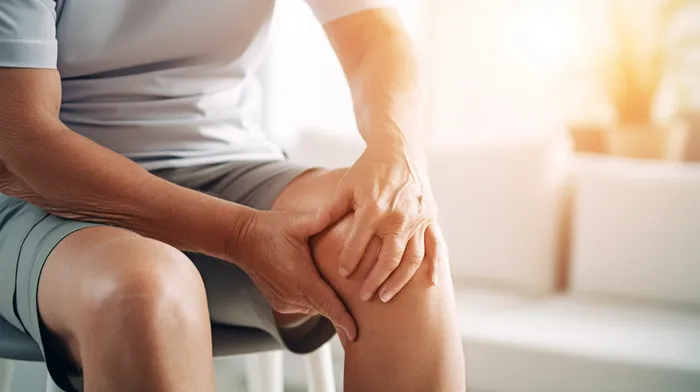Arthritis and joint pain have a great impact on millions of people around the world, often causing pain, inflammation, and a reduction in the ability to carry out daily activities. Knee pain, in particular, is a common and debilitating condition. However, there are natural approaches to alleviating knee pain and preventing further damage, promoting a higher quality of life.
Understanding the knee joint
The knee joint is vital for balance, weight-bearing, propulsion, as well as raising and lowering our bodies. As a hinge joint, the knee is primarily designed to move back and forth from front to back, without bending, twisting or rotating. However, some sports and physical activities can place excessive stress on the knee, leading to injury.
For the knee to effectively maintain weight absorption and body movement, it must rely on muscles, tendons, ligaments, and bones working together. Imbalances or weaknesses in these structures can result in sprains, strains, dislocations, and spurs.
Knee pain and arthritis
Individuals in their 30s or older experiencing knee pain are often diagnosed with osteoarthritis. This is a normal and natural part of the aging process, affecting many people. The most critical aspect of any pain reduction program is to reduce inflammation.
Inflammation and its effects
While acute inflammation is a natural bodily response to stress (both emotional and physical), chronic inflammation is a cause for concern. This unresolved inflammation can disrupt the immune system and the central nervous system’s functions, putting you at greater risk of pain, illness, disease, and accelerated aging symptoms. Reducing inflammation naturally will help alleviate these issues.
The PRICE method
When seeking short-term relief for a sudden onset of knee pain, consider the PRICE method. The acronym stands for Protect, Rest, Ice, Compress, and Elevate:
- Protect: Prevent additional stress on the knee joint by reducing activities and wrapping the knee to protect it from falls or impacts during recovery.
- Rest: Allow time for your knee to begin repair and avoid repetitive strain. However, avoid prolonged immobility, which can lead to frozen joint syndrome.
- Ice: Applying ice to the knee reduces pain and inflammation by cooling the area for around 20 minutes at a time, repeated several times a day.
- Compress: Compression of the knee can reduce swelling and pain by promoting circulation and keeping the bones in alignment.
- Elevate: Lifting the knee above the heart level allows gravity to help drain accumulated fluids around the affected area, reducing swelling.
Applying DMSO
DMSO (dimethyl sulfoxide) is a product often used by athletes for sprains and strains due to its rapid absorption into the skin, reaching deeper tissues and membranes. As it has antioxidant properties, DMSO can neutralize free radicals around injured sites, stabilize damaged cell membranes, and block peripheral nerve C fibers to reduce pain. Additionally, it is rich in sulfur, a building block of collagen, which is a component of cartilage essential for joint health.
In conclusion, knee pain is a pervasive issue affecting people’s quality of life. However, by understanding the knee joint’s function, addressing inflammation, following the PRICE method, and potentially using DMSO, individuals have several natural approaches for alleviating knee pain and promoting better joint health without relying on medications, injections, or surgery.



